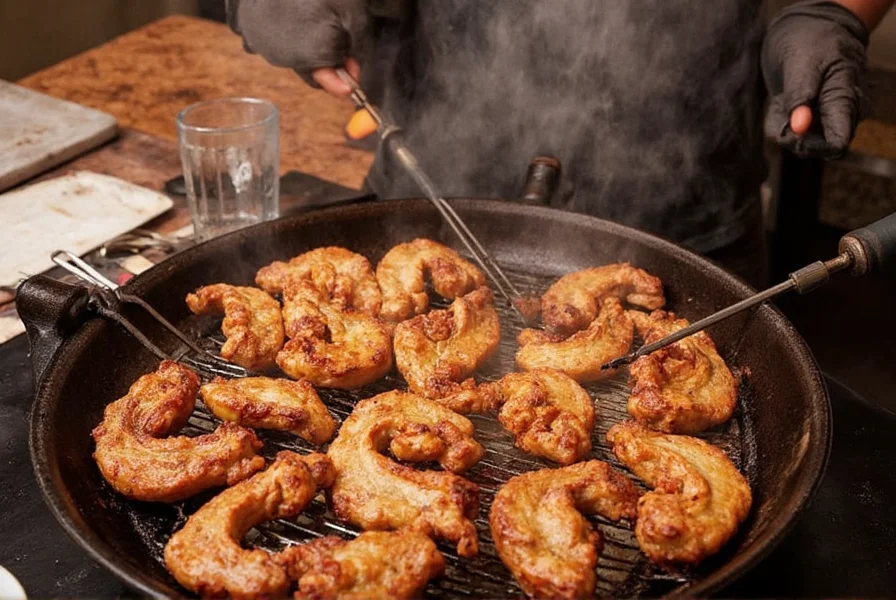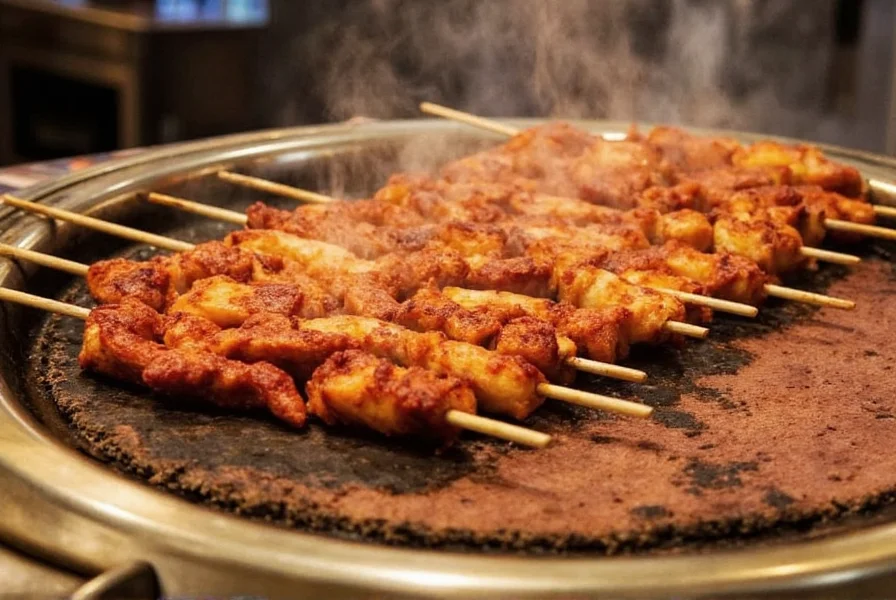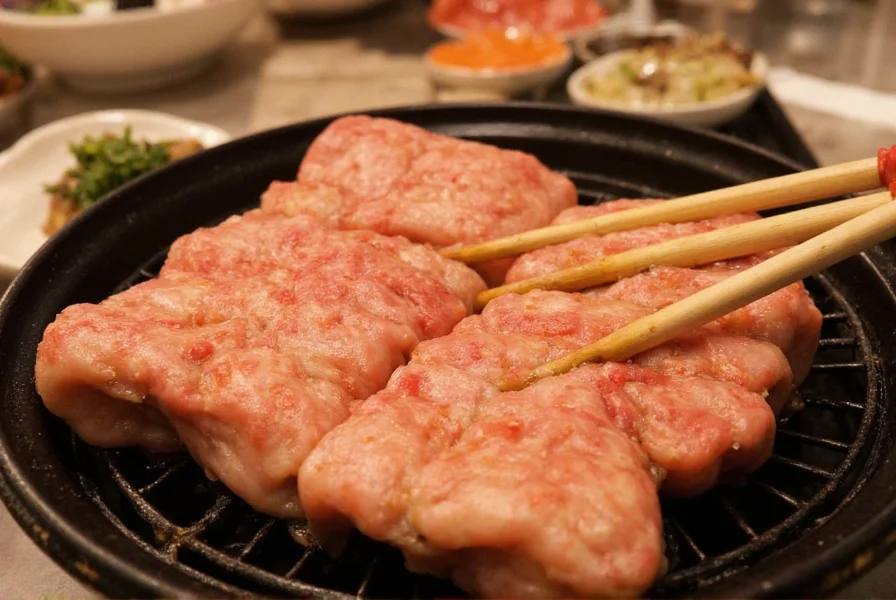Ginger hibachi represents a specialized variation within Japanese teppanyaki cooking that elevates fresh ginger to star status. While many Western "hibachi" restaurants serve generic stir-fry dishes, true ginger hibachi focuses on showcasing ginger's complex flavor profile through careful preparation techniques and ingredient selection. This culinary approach transforms ordinary proteins into vibrant, aromatic dishes that highlight ginger's natural warmth without overwhelming heat.
The Distinctive Characteristics of Ginger Hibachi
Authentic ginger hibachi differs significantly from standard hibachi preparations in three key aspects:
| Feature | Standard Hibachi | Ginger Hibachi |
|---|---|---|
| Primary Flavor | Garlic-forward | Ginger-dominant |
| Ginger Quantity | Minor accent (1-2 tsp) | Substantial component (3-4 tbsp) |
| Flavor Profile | Savory, umami-rich | Bright, zesty with warm finish |
The magic of proper ginger hibachi lies in using fresh ginger root rather than powdered alternatives. Fresh ginger contains gingerol, the compound responsible for its characteristic warmth, which transforms during cooking to create more complex flavor compounds. This chemical transformation produces the distinctive aromatic quality that defines exceptional ginger hibachi dishes.

Essential Ingredients for Authentic Ginger Hibachi Sauce
Creating an authentic ginger hibachi experience requires precise ingredient selection. The foundation of any successful ginger hibachi sauce recipe centers on these non-negotiable components:
- Fresh ginger root - Young, plump roots with smooth skin (never shriveled)
- High-quality soy sauce - Japanese koikuchi shoyu for balanced saltiness
- Mirin - Authentic sweet rice wine (not mirin-style seasoning)
- Rice vinegar - For brightness without harsh acidity
- Sesame oil - Pure toasted variety in minimal quantities
The ratio of these ingredients determines whether your ginger hibachi preparation achieves restaurant-quality results. Professional chefs typically use a 3:2:1 ratio of soy sauce to mirin to fresh ginger, adjusted based on ginger's pungency and desired flavor intensity. Many home recipes fail by using pre-minced ginger from jars, which lacks the volatile aromatic compounds that fresh grating releases.
Step-by-Step Ginger Hibachi Sauce Recipe
Follow this professional technique for creating restaurant-quality ginger hibachi sauce at home. This ginger hibachi sauce recipe yields enough for four servings and maintains authenticity through proper ingredient handling.
Ingredients
- 1/2 cup Japanese soy sauce (koikuchi shoyu)
- 1/3 cup authentic mirin
- 3 tablespoons freshly grated ginger (from approximately 2-inch piece)
- 1 tablespoon rice vinegar
- 1 teaspoon toasted sesame oil
- 1 clove garlic, minced (optional for complexity)
- 1 teaspoon honey or sugar (adjust to taste)
Preparation Method
- Peel fresh ginger using the edge of a spoon to preserve maximum fiber and juice
- Grate ginger on a fine microplane for optimal flavor release
- Combine all ingredients in a non-reactive bowl, whisking gently
- Cover and refrigerate for 24 hours to allow flavors to meld
- Strain through fine mesh sieve before use for smooth texture
- Store in airtight container for up to 2 weeks
This ginger hibachi marinade preparation method differs from quick-mix approaches by allowing proper flavor integration. The 24-hour resting period enables the ginger's essential oils to fully incorporate with other ingredients, creating a harmonious blend rather than separate flavor notes. For best results, always use the sauce at room temperature when preparing your ginger hibachi dishes.

Perfecting Your Ginger Hibachi Protein Preparation
Mastering ginger hibachi requires proper protein handling techniques. The following guidelines ensure optimal results whether you're working with chicken, steak, or shrimp:
Chicken Preparation
For ginger hibachi chicken, use boneless, skinless thighs rather than breasts. Thighs maintain moisture better during high-heat cooking and absorb the ginger hibachi marinade more effectively. Marinate for 4-6 hours (not exceeding 8 hours to prevent texture degradation from ginger's enzymes). When cooking, maintain a consistent 375°F surface temperature on your grill or pan for optimal caramelization without burning the ginger components.
Steak Technique
Flank steak works best for ginger hibachi preparations due to its grain structure that readily accepts the ginger hibachi marinade. Score the surface lightly before marinating to increase flavor penetration. Marinate for 2-4 hours maximum, as ginger's enzymes can begin to break down the meat's structure beyond this point. Cook quickly over high heat (450°F) to medium-rare for best texture.
Shrimp Method
For ginger hibachi shrimp, use 21-25 count shrimp and marinate for only 30-45 minutes. Longer marination causes the shrimp to become mushy due to ginger's enzymatic action. Cook over extremely high heat (500°F+) for 60-90 seconds per side to achieve proper sear without overcooking.
Common Ginger Hibachi Mistakes to Avoid
Many home cooks encounter issues with their ginger hibachi preparations due to these preventable errors:
- Using dried ginger powder - Lacks volatile aromatic compounds of fresh ginger
- Over-marinating proteins - Ginger's enzymes can break down meat texture
- High-sodium soy substitutes - Disrupts the delicate flavor balance
- Adding sauce too early - Causes burning before proper sear develops
- Insufficient resting time - Prevents flavor integration in the sauce
Professional chefs emphasize that the quality of your ginger determines 70% of your ginger hibachi's success. Select ginger roots that feel heavy for their size with taut, moist skin. Avoid roots with soft spots or wrinkles, which indicate age and diminished flavor compounds. Store unused ginger in a paper bag in the refrigerator's vegetable drawer for optimal freshness.
Variations and Adaptations
While traditional ginger hibachi maintains a specific flavor profile, these thoughtful adaptations can accommodate different dietary needs without compromising authenticity:
- Low-sodium version - Use usukuchi (light color) soy sauce and increase mirin proportionally
- Spicy ginger hibachi - Add 1/2 teaspoon grated fresh chili pepper (not dried)
- Fruit-infused variation - Incorporate 2 tablespoons yuzu or calamansi juice
- Vegan adaptation - Replace honey with maple syrup and ensure mirin is vegan
Remember that any adaptation should preserve ginger's starring role. Successful ginger hibachi variations enhance rather than mask the ginger's natural flavor profile. The best adaptations introduce complementary notes that highlight ginger's complexity without competing with it.
Serving Suggestions for Complete Ginger Hibachi Experience
To create an authentic ginger hibachi meal experience, pair your protein with these traditional accompaniments:
- Steamed jasmine rice with toasted sesame seeds
- Simple cucumber sunomono (vinegar-based salad)
- Blanched seasonal vegetables with sesame dressing
- Miso soup with wakame and tofu
The ideal ginger hibachi plating arrangement features the protein as the visual centerpiece, surrounded by complementary elements that provide textural and temperature contrasts. Professional presentation includes a small pool of extra ginger hibachi sauce on the side for dipping, never poured over the entire dish.
Frequently Asked Questions
What's the difference between ginger hibachi and regular hibachi?
Ginger hibachi specifically features fresh ginger as the dominant flavor component (3-4 tablespoons per serving), while standard hibachi relies primarily on garlic with ginger as a minor accent (1-2 teaspoons). Authentic ginger hibachi creates a brighter, more complex flavor profile with ginger's natural warmth as the centerpiece rather than a supporting note.
Can I use ground ginger instead of fresh in ginger hibachi sauce?
No, ground ginger cannot adequately substitute for fresh in authentic ginger hibachi preparations. Fresh ginger contains volatile aromatic compounds that create the distinctive flavor profile, which are lost in the drying process required for ground ginger. The enzymatic action of fresh ginger also helps tenderize proteins in a way that powdered ginger cannot replicate.
How long should I marinate proteins in ginger hibachi sauce?
Marinating times vary by protein: chicken thighs require 4-6 hours, steak needs 2-4 hours, and shrimp should only marinate 30-45 minutes. Ginger contains enzymes that break down protein structure, so over-marinating causes texture issues. Never exceed 8 hours for any protein to maintain optimal texture while allowing sufficient flavor absorption.
Why does my homemade ginger hibachi sauce taste bitter?
Bitterness in ginger hibachi sauce typically comes from either using old, dried-out ginger root or adding the sauce too early during cooking. Fresh ginger should be plump and moist; shriveled roots develop bitter compounds. Additionally, ginger compounds can burn at high temperatures, so add the sauce during the final 2-3 minutes of cooking rather than at the beginning.
What's the ideal ginger to soy sauce ratio for authentic ginger hibachi?
The professional standard ratio is 3 parts soy sauce to 2 parts mirin to 1 part freshly grated ginger by volume. This creates balanced flavor where ginger's warmth shines without overwhelming other elements. Adjustments may be needed based on ginger's pungency and personal preference, but maintaining this proportional relationship ensures authentic ginger hibachi flavor development.











 浙公网安备
33010002000092号
浙公网安备
33010002000092号 浙B2-20120091-4
浙B2-20120091-4